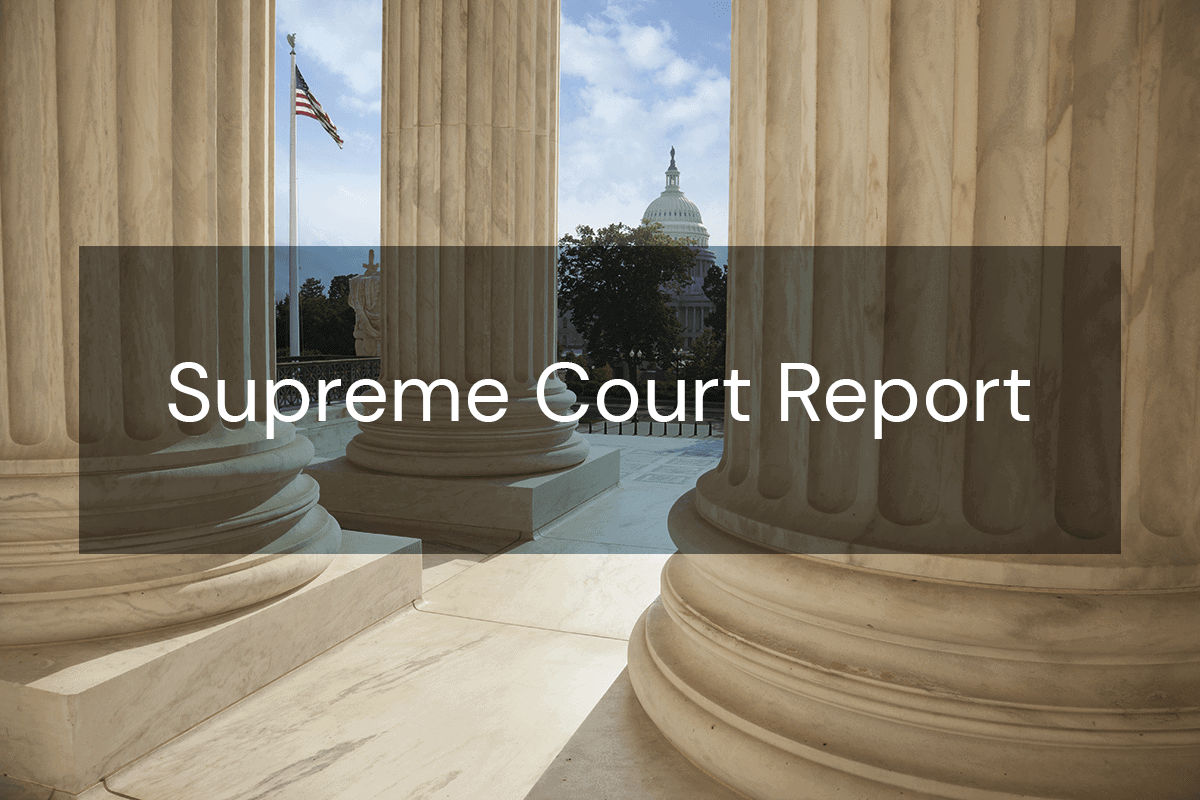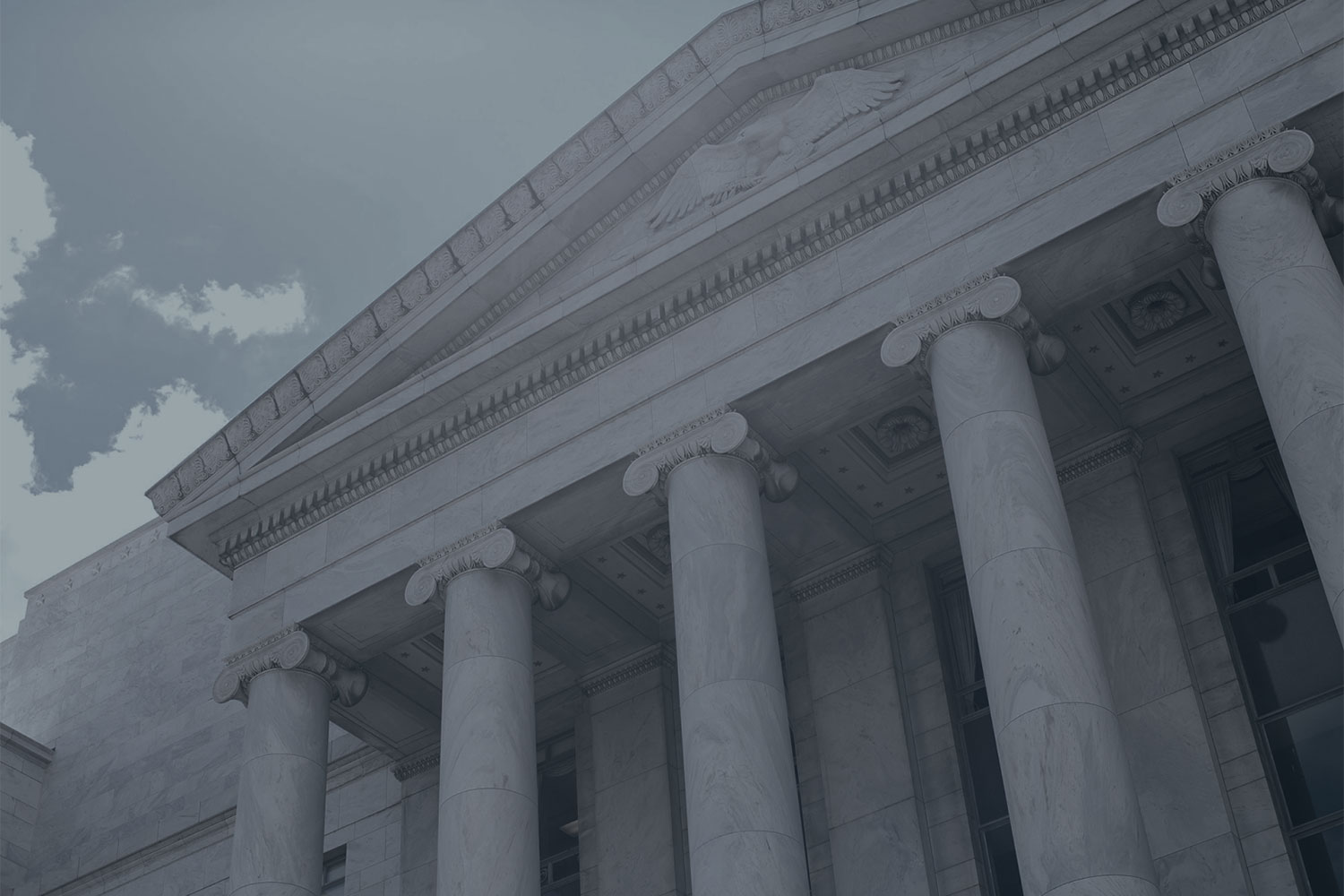-
 Director, Center for Supreme Court AdvocacyNational Association of Attorneys General
Director, Center for Supreme Court AdvocacyNational Association of Attorneys General

December 20, 2024 | Volume 32, Issue 4
This Report summarizes cases granted review on December 18, 2024 (Part I).
CASES GRANTED REVIEW
TikTok, Inc. v. Garland, 24-656; Firebaugh v. Garland, 24-657.
The Court will resolve “[w]hether the Protecting Americans from Foreign Adversary Controlled Applications Act”―which bars TikTok from operating in the United States as of January 19, 2025, unless the Chinese company that owns it divests its assets―“violates the First Amendment” as applied to TikTok and its users. “TikTok has more than 170 million monthly American users and more than 1 billion users worldwide. . . . In 2023, TikTok users in the United States uploaded more than 5.5 billion videos that were viewed more than 13 trillion times . . . .” “ByteDance Ltd., the ultimate parent company of TikTok, is incorporated in the Cayman Islands. The Government characterizes ByteDance as headquartered in China and ByteDance acknowledges that it has significant operations there.. . . The company was founded by Yiming Zhang, a Chinese national. Zhang retains 21 percent ownership of the company.”
The Executive Branch first became concerned about China’s influence over TikTok in 2018. President Trump took action against TikTok, which led to litigation. Eventually, in 2021, President Biden identified China as “a foreign adversary” that “continues to threaten the national security, foreign policy, and economy of the United States” through its control of “software applications” used in the United States. “PresidentBiden elaborated that ‘software applications’ can provide foreign adversaries with ‘vast swaths of information from users,’ and that the PRC’s ‘access to large repositories’ of such data ‘presents a significant risk.’” The Biden Administration and TikTik negotiated during 2021 and 2022; “TikTok submitted multiple drafts of its proposed National Security Agreement (NSA) and Executive Branch officials held numerous meetings to consider TikTok’s submissions.” After the Executive Branch concluded that the NSA was insufficient, Congress enacted the Protecting Americans from Foreign Adversary Controlled Applications Act (the Act). The Act makes it unlawful for ByteDance “to distribute, maintain, or update” TikTok unless China divests from ByteDance. “If the Act’s prohibitions take effect, they will ‘render the TikTok platform inoperable in the United States.’” The Act’s prohibitions take effect on January 19, 2025 (though the President can extend that effective date for 90 days).
TikTok and ByteDance, as well as a group of TikTok users, filed suit in the D.C. Circuit seeking to enjoin the Act. They alleged that the Act violates the First Amendment, among other things. The D.C. Circuit rejected their claim. 2024 WL 4996719. The two-judge majority opinion “assume[d] without deciding that strict scrutiny applies and uph[e]ld the law on that basis.” In short, “[t]he Government has offered persuasive evidence demonstrating that the Act is narrowly tailored to protect national security.” “The Government offers two national security justifications:(1) to counter the PRC’s efforts to collect great quantities of data about tens of millions of Americans, and (2) to limit the PRC’s ability to manipulate content covertly on the TikTok platform.” “Each constitutes an independently compelling national security interest.” In so holding, the majority “follow[ed] the Supreme Court in affording great weight to the Government’s ‘evaluation of the facts’ because the Act ‘implicates sensitive and weighty interests of national security and foreign affairs.’” Among other things, the majority credited the Government’s prediction “that ByteDance and TikTok entities ‘would try to comply if the PRC asked for specific actions to be taken to manipulate content for censorship, propaganda, or other malign purposes on TikTok US.’” And “[g]iven the magnitude of the data gathered by TikTok and TikTok’s connections to the PRC, two consecutive presidents understandably identified TikTok as a significant vulnerability.” The majority also found that “[p]reventing covert content manipulation by an adversary nation also serves a compelling governmental interest.” The majority ruled that the Act is narrowly tailored to address those interest because “the relevant provisions . . . are limited to foreign adversary control of a substantial medium of communication and include a divestiture exemption. By structuring the Act in this way, the Congress addressed precisely the harms it seeks to counter and only those harms.” The majority rejected TikTok’s proposed NSA as a less-restrictive alternative. Judge Srinivasan, in a concurring opinion, would have upheld the Act under intermediate scrutiny.
TikTok and the users filed applications for an injunction pending review. The Court treated them as petitions for writs of certiorari and granted them. In its filing, TikTok argues that strict scrutiny applies and the Act cannot survive it. On the former point, TikTok asserts that “the Act ‘cannot be justified without reference to the content of the regulated speech’: the Government’s asserted concern about China’s ‘ability to manipulate content covertly on the TikTok platform’ itself ‘reference[s] the content of TikTok’s speech.’” And “[r]egardless of Congress’s motive, the Act ‘directly and immediately’ regulates based on applications’ content.” TikTok next argues that the Act does not survive strict scrutiny. As to the Government’s content-manipulation interest, TikTok says that “banning Applicants from operating TikTok sweeps far more broadly than necessary to address any concern that TikTok users are being misled about who is behind the content. . . . As this Court has repeatedly held, ‘disclosure’ is the ‘less restrictive alternative’ typically required to remedy misleading sources of speech.” As to the Government’s data-protection interest, TikTok asserts that the Act is underinclusive because “’[t]he type and amount of data that TikTok collects from U.S. users’ is ‘comparable’ to other applications with equivalent alleged China connections.” More generally, TikTok argues that its proposed NSA was a less-restrictive alternative. Among other things, the NSA “include[ed] the ring-fenced storage of U.S. data in the Oracle cloud, an industry-leading approach.”
Kerr v. Planned Parenthood South Atlantic, 23-1275.
The Court limited the cert grant to the first question presented, which asks: “Whether the Medicaid Act’s any-qualified-provider provision unambiguously confers a private right upon a Medicaid beneficiary to choose a specific provider.” The any-qualified-provider provision declares that state Medicaid plans “must” allow “any individual eligible for medical assistance” to obtain “assistance from any [provider] qualified to perform the service . . . who undertakes to provide” it. 42 U.S.C. §1396a(a)(23)(A). On July 13, 2018, South Carolina’s Governor issued an executive order directing the state’s Department of Health and Human Services to deem abortion clinics unqualified to provide family planning services, to terminate their Medicaid enrollment agreements, and to deny future enrollment applications from them. The same day the Governor issued that order, the Department notified respondent Planned Parenthood South Atlantic that its enrollment agreements were being terminated because it was “no longer . . . qualified to provide services to Medicaid beneficiaries.”
Shortly thereafter, respondents Planned Parenthood South Atlantic and one of its Medicaid clients (hereafter Planned Parenthood) filed suit in federal court, arguing that by terminating Planned Parenthood’s enrollment agreements, South Carolina had violated clients’ right to the “qualified provider of their choosing under 42 U.S.C. §1396a(a)(23).” The district court granted Planned Parenthood’s motion for a preliminary injunction. The Fourth Circuit affirmed. The district court then granted a permanent injunction. The Fourth Circuit again affirmed. Petitioner, the Director of South Carolina Department of Health and Human Services, sought review in the U.S. Supreme Court. The Supreme Court granted the petition, vacated the Fourth Circuit judgment, and remanded for reconsideration in light of its decision in Health & Hospital Corp. of Marion County v. Talevski, 599 U.S. 166 (2023). On remand, the Fourth Circuit stood by its prior holdings.
In its various holdings, the Fourth Circuit concluded that the any-qualified-provider provision is “unmistakably clear” in creating a privately enforceable right. “If th[is] language does not suffice to confer a private right, enforceable under § 1983,” the court stated, “it is difficult to see what language would be adequate.” On remand following Talevski, the Fourth Circuit reiterated that the any-qualified-provider provision is enforceable under §1983 because it “explicitly gives Medicaid beneficiaries the right to the provider of their choice” and “there is no indication that Congress wanted to foreclose such individuals from seeking relief under § 1983.” In particular, the court stated, “[l]ike the text at issue in Talevski,” the any-qualified-provider provision “speak[s] ‘in terms of the person benefited,’ and ha[s] an ‘unmistakable focus on the benefited class.’” The provision, the court explained, “focus[es] on discrete beneficiaries and guarantee[s] them a choice” of any qualified medical provider “free from state interference.” On an issue the Supreme Court did not grant certiorari on, the Fourth Circuit then held that Planned Parenthood is a qualified and willing provider and that the Director’s decision to terminate it from South Carolina’s Medicaid program was unjustified.
In its petition, the Director of of South Carolina Department of Health and Human Services argues that the Fourth Circuit wrongly relied on the Supreme Court’s earlier rulings on when a federal statute creates a right enforceable under §1983, instead of its later rulings in Gonzaga University v. Doe, 536 U.S. 273 (2002), and Talevski. The earlier rulings were Wright v. City of Roanoke Redevelopment and Housing Authority, 479 U.S. 418 (1987), Wilder v. Va. Hosp. Ass’n, 496 U.S. 498 (1990), and Blessing v. Freestone, 520 U.S. 329 (1997). The Director explained that Blessing reformulated Wright and Wilder into a three-part test for finding an enforceable right under §1983: “First, Congress must have intended that the provision in question benefit the plaintiff.” “Second, the plaintiff must demonstrate that the right assertedly protected by the statute is not so vague and amorphous that its enforcement would strain judicial competence.” “Third, the statute must unambiguously impose a binding obligation on the States.” The Director asserts that Gonzaga changed matters, when it observed that Blessing “might be read to suggest that something less than an unambiguously conferred right is enforceable by §1983.” Gonzaga clarified that the Court “reject[ed] the notion that [its] cases permit anything short of an unambiguously conferred right to support a cause of action brought under §1983.” The Director goes on to assert that, ”[l]ike the provisions in Gonzaga, the any-qualified-provider provision lacks clear rights-creating language or an unmistakable focus on a benefited class. Indeed, it says nothing about a ‘right’ at all.” Says the Director, “the any-qualified-provider clause appears in a long list detailing what ‘State plan[s] for medical assistance must’ include. 42 U.S.C. 1396a(a). In other words, the any-qualified-provider provision appears in a directive to the Secretary of Health and Human Services, not a directive to providers.”
NAAG Center for Supreme Court Advocacy Staff
-
- Dan Schweitzer, Director and Chief Counsel
The views and opinions of authors expressed in this newsletter do not necessarily state or reflect those of the National Association of Attorneys General (NAAG). This newsletter does not provide any legal advice and is not a substitute for the procurement of such services from a legal professional. NAAG does not endorse or recommend any commercial products, processes, or services.
Any use and/or copies of the publication in whole or part must include the customary bibliographic citation. NAAG retains copyright and all other intellectual property rights in the material presented in the publications.



